






































































































































secrets to
work, a willingness to adapt, and the love of a good
Family that owns 13th Street Winery celebrates Whitty’s milestone birthday
By Luke Edwards
It may not be a huge surprise that a farmer like Joe Whitty enjoys the spring. After all, that’s the time of year when the soil comes back to life and the crops start growing. The world regains colour and sound as the animals come out of their winter slumbers.
But for Whitty, it’s not the sights and sounds. It’s something else.
“You can smell it,” said the St. Catharines man who recently hit a major milestone as he celebrated his 100th birthday. Whitty celebrated the achievement at 13th Street Winery, where his family continues to farm to this day.
“Spring was always nice. You’d plant in the spring and then watch it grow all summer.”
The family arrived in Niagara in the early part of the 20th century, with Joe’s dad Charles Nicholas Whitty buying his first farm in 1908. They originally came over from Ireland during the potato famine, settling in Kingston.


Charles Nicholas Whitty worked for a year in Niagara, saving up money to buy that first farm, a 13acre plot that he called Frontenac Farms as a tribute to his Kingston roots. It later became Whitty Farms.
In what would become a familiar trait Charles was a bit of an innovator who was willing to change and adapt as needed. While the Whittys have long been connected to grapes and tender fruit, Charles raised foxes for fur and had an egg route, understanding early on the value of marketing.
Joe was born in 1925, and grew up helping his dad on the farm. There were tough times when he was growing up. He lived through the Great Depression and the Second World War. His mom contracted tuberculosis when Joe was in his teens and she went to live at the St. Catharines sanatorium.
“For two years he could just go out on a Sunday and wave to her at the window,” said Joe’s son Doug, who now runs the business with his wife Karen.
Joe eventually went to study agriculture at the University of Guelph. It was at Guelph that he met Leith, his future wife and the


best thing Joe said ever happened to him. Joe and some friends had gone to a football game and they were all piling into his friend’s car afterward. With more people than seats, Leith climbed in and sat on Joe’s lap.
“I thought, well, this sounds very good,” Joe recalled with a laugh.
Change wasn’t just new tools and technology. Farmers like the Whittys had to adjust as economic changes occurred.
“It was a sad day when they closed the canning factory,” Joe recalled. The closure of processing facilities meant farmers had to adapt.
“The farm had to really change,” said Doug.
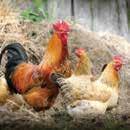

Publisher
Stewart Grant • stew@granthaven.com
Editor
Luke Edwards • luke@granthaven.com
Business Development
Heather Dunbar • heather@granthaven.com
Graphic Design
Erin Parsons • niagarafarmsnewspaper@gmail.com
Billing Administrator
Jen Gaetan • jen@granthaven.com
Contributor
Ann Marie Chechalk


Restoring small-town journalism, one community at a time!
They married in 1954. Leith worked for a time at the research station that has since become Vineland Research and Innovation Centre, and also taught at Power Glen Public School.
“She was hardworking and very smart,” said Doug.
Joe said his only regret in life is that he didn’t have more time with Leith. She died when she was 78 years old.
“I lost my wife too soon, that’s the only sad part,” he said, though he fondly remembers yearly trips they’d take down to Florida that seemed to energize Leith.
When he started farming, Joe used horses. He can still remember the first tractor they used, an old Fordson.
“You could hear it from a mile away,” he said.
Other advancements came along too. Joe was an early adopter of cold storage and had one of the first grape harvesters.
“That was an eye opener,” he said of the harvester. What would once take a day of picking by hand could now be accomplished in under 10 minutes. But technology had its drawbacks. Horses would get tired, tractors - especially when they had lights - meant you could keep working late into the night.
Joe could still be found on a tractor into his 80s, helping out on the farm. He no longer drives, a decision Joe made on his own. But he still keeps up to date, reading the news and often going out for a drive with his other son David, where Joe keeps an eye on the local farms and remembers what the area used to look like.
Adaptation continues to be a big part of the success for the Whittys, with Doug saying they’ve embraced things like agri-tourism.
Still, things aren’t easy for young farmers these days. Joe offers up a couple pieces of advice for those young people getting into farming. The first is to respect the soil.
“If you treat the soil properly, the soil will treat you. But if you abuse the soil, you’re not going to be successful,” he said. Joe’s been known to compare it to a bank account - if you only ever make withdrawals, eventually you’ll run into problems.
His second piece of advice has to do with passion. Getting into farming requires a mix of financial commitment, knowledge and work ethic.
“You’ve got to find your niche,” Joe said.
By Niagara Farms Staff
Two dozen new grape varieties that boast resistance to temperature extremes, low dependence on chemical fertilizers and pesticides, and perhaps most importantly, produce high quality wines, have been added to the certified list of Vintners Quality Alliance.
The province announced the addition of 24 new varieties to the list last month.
“This additional list of approved varieties provides growers across Ontario with more opportunities to be sustainable and to move more grapes into world class certified wines,” said Matthias Oppenlaender, chair of the Grape Growers of Ontario, in a press release.
To be able to use a VQA label, a wine and winery must undergo testing and audits from the Ontario Wine Appellation Authority, which acts as the regulatory agency responsible for the integrity of Ontario wine appellations.
According to the provincial government, officials picked the new varieties based on a combination of the high quality of wine they produce, their resistance to
extreme temperature and a lower dependence on chemical fertilizers and pesticides.
“Approving these new grape varieties means our local wineries and farm families can continue to innovate and adapt to changing growing conditions and bring new, distinctive wines to market. This is a win for our farmers, a win for sustainability, and a win for everyone who enjoys high-quality Ontario wine. Niagara’s wineries are already some of the best in the world and this announcement helps them stay ahead,” said Niagara West MPP Sam Oosterhoff in a release marking the announcement.
The additional varieties came as Ontario approached its first Buy Ontario, Buy Canadian Day, an effort to remind Ontarians the importance of shopping local and the high quality items made here in Ontario and Canada. It was created in part in response to the trade war launched by U.S. President Donald Trump.
“As we approach Buy Ontario, Buy Canadian Day, we are proud to support this thriving industry and remind everyone that world-
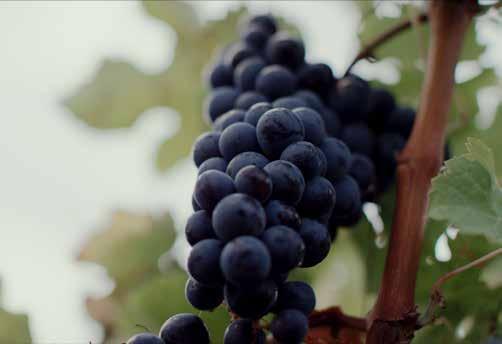
class wine is being made right here at home,” said Stephen Crawford, minister of public and business service delivery and procurement. With a wine market that’s growing and modernizing, Minister of Agriculture, Food and Agribusiness Trevor Jones said supporting agribusiness has never been more important.
“Whether you are visiting a winery, dining out or shopping, choose a locally grown and globally acclaimed Ontario wine,” he said.
According to provincial numbers, more than 22,000 jobs in Ontario are dependent on the grape and wine industry. Last year more than $430 million in VQA wines were sold globally.


































‘It’s just like going back in time’: Power
Niagara Antique Power Association’s annual show treats visitors to ‘oddballs and orphans’
By Luke Edwards
History was on her mind as she sat atop the restored Motorette.
June Robinson wasn’t just thinking of the funky contraption that was once assembled in Ridgeway and the New York company that manufactured it. She was also thinking about her own history; her first husband Wayne Baker found the three-wheeled miniature vehicle decades ago, restoring it to its former glory.
“This was a part of our summer, we went to steam shows all summer long,” Robinson said, at the Niagara Antique Power Association’s annual show, held this year at the end of June. It promised “oddballs and orphans” at this year’s show, so items like the Motorette fit in.
While Wayne is gone, her son Darcy and grandson Jack are following in his footsteps. Darcy
maintains the collection of restored antique machines while Jack recently placed second at the Skills Ontario competition, showing great promise to keep the family tradition going.
Robinson said events like the NAPA show are an important reminder of our shared past.
“It’s all part of our history,” she said.
It was a common refrain from those visiting. Joe Pirosko runs a cash crop operation just a few roads over from the Wilhelm Road farm that hosts the show. He hadn’t been to the show in a few years and decided to bring his children, Audrey and Joey, out so they could experience the history. They spent some time at a vendor selling old tools, looking for something that caught their eye.
“It’s just showing them all the old stuff,” he said.
Steve Robbins had a small collection of John Deere equipment that’s been restored by himself and his grandfather Bill. Steve’s been a longtime visitor to the show.
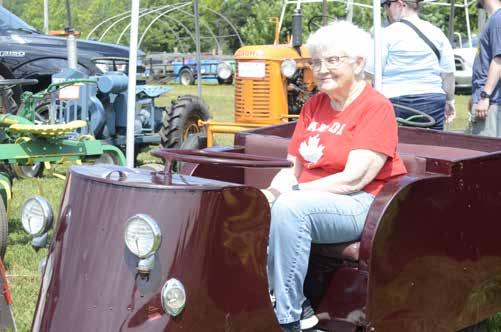
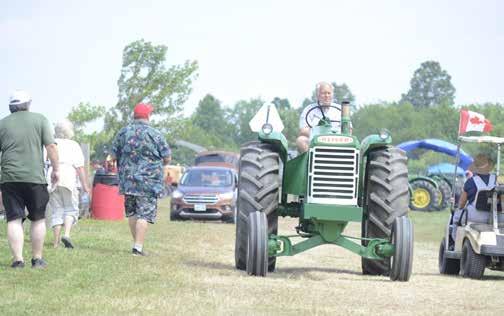
“It was one thing my grandfather always took me to,” Steve recalled.
Restoring the old machines allows him to marvel at the craftsmanship that went into building the equipment. Without today’s computers and technology, tractors and implements of the past were nonetheless built with durability in mind.
“It’s hard to imagine them building it,” he said.
The event spanned three days in the weekend leading up to Canada Day. For more than 50 years the show has run. In addition to the antique tools and equipment, visitors could also take in music, enjoy
food, look for deals in the trading post or visit with a few animals.
In remarks for the opening ceremony, Port Colborne Mayor Bill Steele reminded visitors of just how important the farming community is.
“All the food you eat today is thanks to a farmer,” he said. “They are so important to our community.”
He also thanked the volunteers, who work tirelessly behind the scenes to make sure events like the power show are a success.
“These events don’t happen without the great help of the volunteers,” he said.
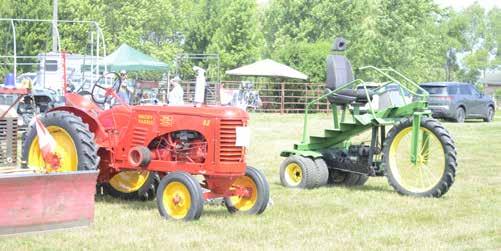


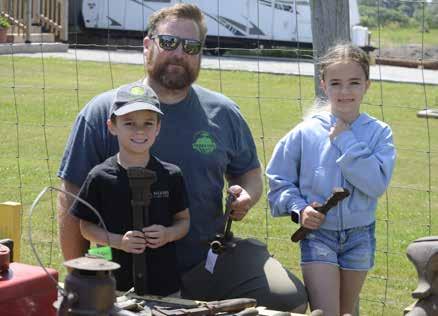
the solution to a lot of things, like climate change mitigation, biodiversity, species-at-risk and flood control.”
One of the offshoots of Norfolk’s initial efforts occurred after Prince Edward Island environment George Webster attended the pilot launch in 2008. The island was having an environmental issue at the time and ALUS quickly became the solution and a well-funded provincial program.
Today, nationally ALUS is approaching 1,000 farmers participating through 27 different community based programs in six provinces. Together they have enrolled 27,183 acres in the program.
Officially, ALUS Canada’s mantra now is: “ALUS Canada makes it possible to offset your environmental footprint through agricultural stewardship. ALUS invests in farmers and landowners who are producing acres of clean air, clean water, wildlife habitat and other ecosystem services in communities across Canada.”

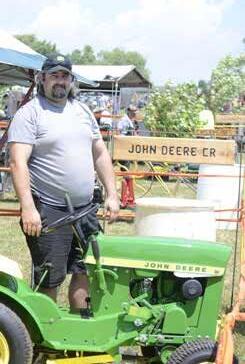
Credit was given to some of the programs largest advocates by Gilvesy. Local MPP Toby Barrett has been a large ALUS proponent since the early days, and introduced a Private Member’s Bill promoting the concept. Wishart is now a MLA in Manitoba, and promoting it there. Bob Sopuck, who was Delta Waterfowl’s western vice-president of policy was an early advocate and became elected as an MP and was the program’s champion on Parliament Hill. Dave Reid co-wrote the ALUS concept documents with Dr. Bob Bailey, Delta’s eastern vice-president of policy.
Over the years, Gilvesy has talked to thousands of people about ALUS at hundreds of speaking engagements across Canada. Recognition for the program has included a Premier’s Ag Innovation Award
Gilvesy is proud ALUS is a farmer-led program and farmers fell they are the program owners.

“People feel they are partners in ALUS,” he said. “It’s the value of developing a grassroots program that recognizes the value of community.”

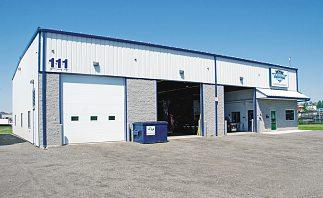


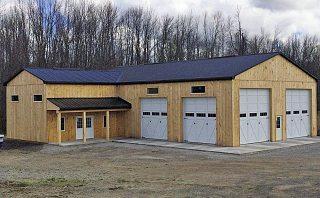
Open house at St. Catharines horse farm helps promote Bill Galvin Racing Alliance art contest
By Luke Edwards
Today, they’re encouraging students to put a pen or pencil in their hands to see what they can create in the hopes that tomorrow those kids may put a harness in their hands.
The Bill Galvin Racing Alliances is once again running its art and literary contest. Open to students across Ontario, the contest seeks to get kids thinking about the sport of harness racing. This is the third year the alliance has hosted the contest since Karen Hauver and sister Barb Lennox helped launch the volunteer group.
“Last year I was just blown away, we had so many beautiful submissions,” said Hauver, executive director.
Hauver comes from a harness racing family, with her father enjoying a successful career in the sport. After retiring she was looking for a way to give back. The idea of the alliance stemmed from Lennox, but she died before it became a reality. Hauver picked up the torch.
Galvin was a well known promoter of harness racing.
“His focus was, he always wanted to get the kids involved with the horses. So when we started it up we wanted to focus on the youth,” Hauver said.
Galvin held a similar literary/art contest that Hauver helped bring back in 2018, though COVID-19 interrupted things.
“When we started this organization we kind of carried it on,” said Hauver.
The literary contest is open to kids from Grade 3 to Grade 8, with age groups of Grade 3 to 5, and a second for kids in Grade 6 to 8. Submissions can be a short story or a poem that includes a standardbred theme.
For the visual artists, there’s an additional age group for high school students.
Those who finish in the top three of their group will be invited to an awards night at Mohawk Park where they find out where they finish. Cash prizes are available, ranging from $250 for the winner and $100 for third place.
The deadline to enter is the end of August and full details, including submission forms, can be found online at bgracingalliance.ca.
To help promote the contest, St. Catharines breeder Tom and Beth Rankin held an open house earlier this spring, welcoming members of the public to his farm to get up close with seven foals and the moms. The Rankins have 35 years of experience breeding horses.
“The foals were definitely the stars of the day—people just lit up around them,” said Tom, in a press release. “Watching folks connect with these young horses is truly special and reminds me why I’ve loved this industry for so long. There’s nothing like seeing new life on the farm and knowing you’re part of something that’s both timeless and full of promise. It’s a real privilege to share this part of the journey, and I’m thankful to everyone who came out to be part of it.”
More than 300 guests stopped by the farm, giving potential contest entrants some inspiration. Others could also take part in a Name-the-Foal contest.
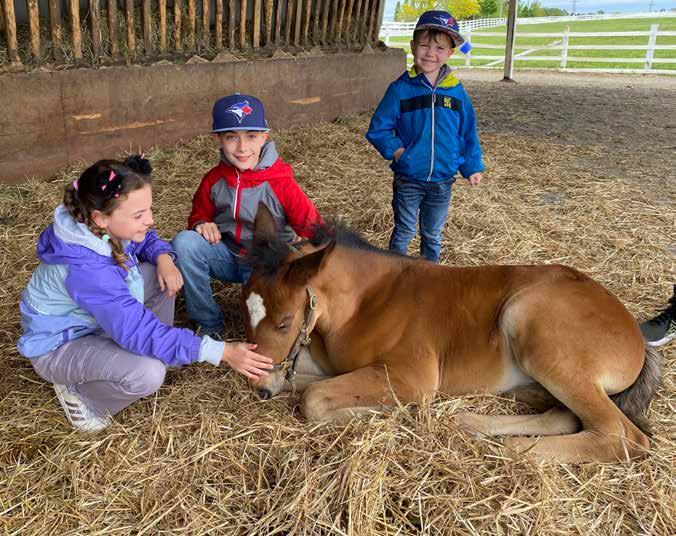
Hauver said she and the other alliance members were grateful for the support they’ve received from the Rankins.
“Tom has been so supportive of everything we’ve done,” she said.
“You can’t talk to Tom very long without knowing what a great fan he is of the industry.”
Harness racing in Ontario isn’t as big as it once was, Hauver acknowledged, though she said there’s still a strong and passionate core. She hopes the contest will get more kids thinking about the sport, and submissions often come from young people who are horse lovers







but who may not have considered harness racing before.
Hauver said it’s a great sport to be a fan of, and has the added bonus of being an inexpensive night out. Admission to the track is typically free.
In addition to the contest, the alliance also has a virtual reality harness racing system they take to events like local fairs.
“It’s just like they’re driving in a race, it’s been really really popular,” Hauver said.
For more information on the alliance, visit bgracingalliance.ca


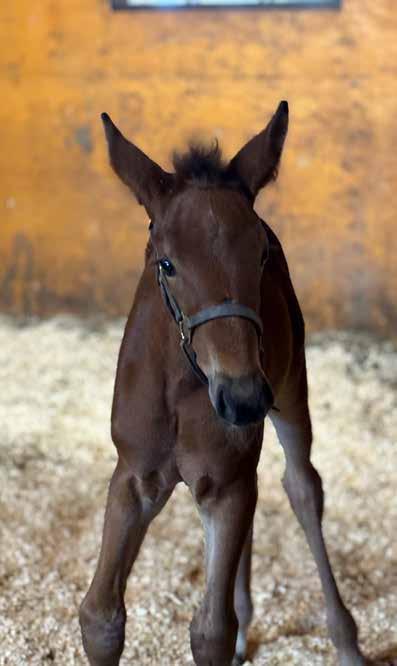
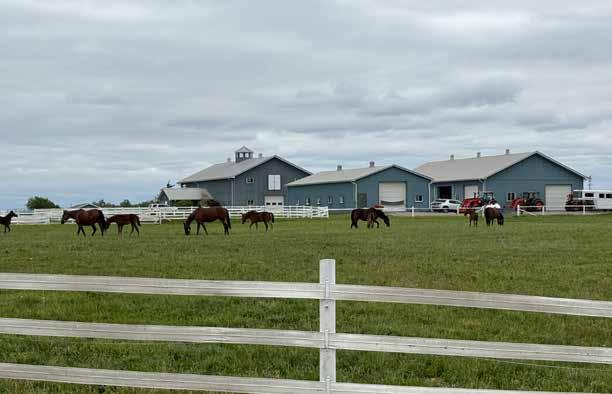







AI on display
By Luke Edwards
With an Xbox controller in their hands, visitors young and old tried to navigate the robot through the rows of corn.
For some, years of video games paid off, while for others a few broken stalks of corn signalled game over. Fortunately, the robot is normally on autopilot, inspecting fields day and night.
“Everybody that we’ve talked to, they want to get their hands on a robot,” said Tanya Franklin, vice president of agronomy and strategic partnerships for Upside Robotics. The company was one of 16 displays at last month’s demonstration day at Vineland Research and Innovation Centre.
Based in the Kitchener-Waterloo region, Upside Robotics was born out of a desire to reduce greenhouse gas emissions that come from nitrogen applications in agriculture, namely in corn production. The company created a robot that roams corn fields, applying nutrients as needed.
“We found we could cut nitrogen rates back by over 70 per cent on specific farms,” said Franklin.
Historically, Franklin said something in the neighbourhood of 60 per cent of nitrogen that’s applied to corn fields gets lost to the atmosphere. Their robot is able to apply the fertilizer much more efficiently, reducing that number significantly.

“So it’s saving the farmers a lot of money on nutrients, and then not impacting yield at all,” she said.
Following a trial of seven farms that covered a total of 70 acres last year, the company is now looking to calibrate how to cut the nitrogen back and seeing if they can really push yields.
Bryan Lynch, the director of horticultural technology solutions for VRIC, said it was great
to see such a turnout. Several industry people came out to the research farm, speaking with the companies displaying their technology and learning where farming could be going in the future.
“It’s showcasing groundbreaking Ontario-based technology,” he said.
Ian Potter, the centre’s CEO and president, said the demo day fit in with their mandate,











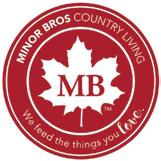








which is to go beyond simply developing interesting technology.
“Taking that step to make sure it’s impactful to the sector,” he said.
Many of the companies displaying their technology were local to Niagara. Sean Bartlett, business unit manager of NM Bartlett Inc. in Beamsville, was running his combo robotic tractor-ISA sprayer.
As the tractor navigated its way through the orchard, the sprayer’s nozzle came on and off with elite precision.
“The nozzles are turning on and off on their own, and that’s based on these sensors that are on here,” he said.
“It’s basically reading if there’s any green tissue, so chlorophyll, and if it reads it then it turns that single nozzle on.”
Like the Upside Robotics machine, the ISA sprayer improves efficiency and means growers can use less.
In addition to working with the sprayer, Bartlett said the tractor can also be used with a mower or flail chopper.
Meanwhile, Bartlett said they’re also working with Vivid Machines - another company that was at the demo day - to utilize its camera technology to take things a step further. Some trees, like honeycrisp apples, are biannual. With Vivid’s camera technology it can detect fruit loads, which provides an opportunity to more efficiently deploy thinners.
“Do I want to spray this thinner on every tree? No, there’s no value,” Bartlett said. Collaboration was a recurring theme that came out during the day. Several of the companies are combining their technologies to produce something even better, while VRIC researchers are also offering their expertise to the start-ups.
Bartlett said the partnerships are great, and demo days can also go a long way in making younger people consider agriculture.
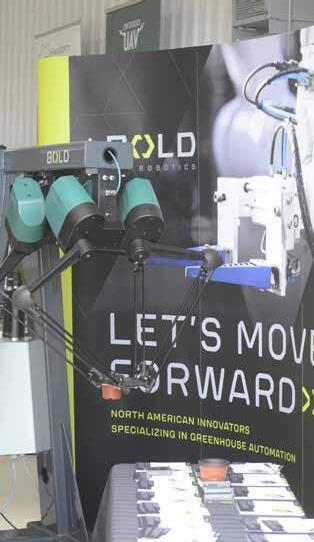
“More than anything it can help energize younger generations to want to get back into farming,” he said.
Another local company, Econse, is based out of St. Catharines and run by Derek Davy. He’s worked with companies in different sectors who have water pollution issues, with devices that treat water on site. His involvement with Vineland is focusing on greenhouse operators.
“We’re doing a demo project with Vineland to help introduce our technology to the greenhouse sector,” he said. With governments increasingly concerned about water pollution, Davy said the technology can help achieve targets get unwanted elements like phosphorous out of the water.
“What we do is help businesses double their size without doubling their impact on the environment,” he said.
The company is known for its work with Bench Brewing, which uses the technology to treat waste water from the brewing process. What’s left over is used for processes like irrigation.
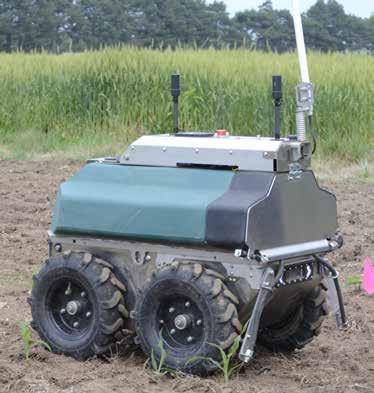



By Luke Edwards
When it comes to growing food there are plenty of foundational elements. There’s the soil, the nutrients, and of course, the seeds themselves.
But for Rob Noseworthy, there’s something else even more ‘fungalmental.’
“The fungal kingdom is at the base of everything,” the St. Catharines man said while standing next to his table at the Welland Farmers Market recently.
Noseworthy operates Flower Child Farm and Garden. It started with a desire to grow his own organic foods, but has since morphed into a specialty mushroom business, where he grows a variety of mushrooms and sells them at local markets. Currently he can be found at the Welland, Crystal Beach and Grimsby markets.
In certain respects, mushroom growing is incredibly easy, though in others it requires precision and extreme attention.
“Anybody can do this if you have the willingness to learn and actually work at it,” he said. “This can be done inside a small house, it can be done even in an apartment if you want to.”
He relied heavily on YouTube videos and the kindness of the mushroom growing community, where he said people are more than willing to share what they’ve learned.
However, it’s not all easy. Getting his system set up took some trial and error, with a few sad days when things went wrong and he had to throw away an entire crop.
“The biggest challenge in the beginning is battling contamination,” he said. Unwanted bacteria or competitors can destroy a crop.
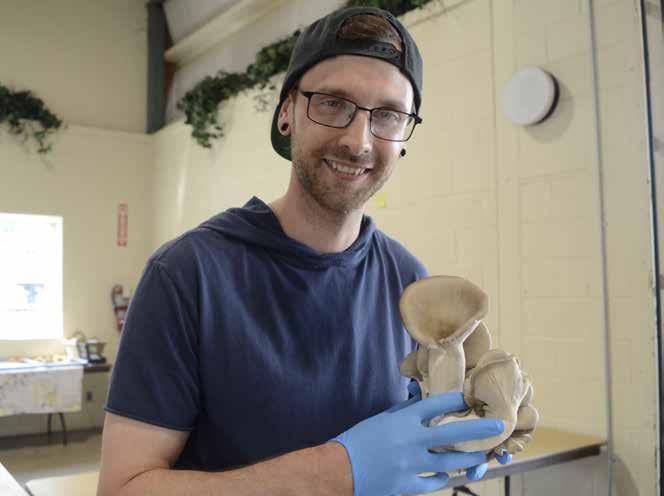
“I’ve had to throw out hundreds of pounds of mushrooms. It’s devastating,” he said.
Things run more smoothly now that he has a system that works, leading to a variety of funky looking mushrooms for sale.
While he has a variety, Noseworthy’s go-to mushroom would be the blue oyster.
“The blue oyster is so versatile, it’s a great texture, it’s got great flavour. It’s got all the nutrition you need and it goes in everything,” he said, adding it goes great in pastas, stews, or stir frys, or can be a great complement to a barbecued meat.
Mushrooms have a range of nutritional benefits, including being a source of vitamins like vitamin D, antioxidants and more.
Noseworthy hopes to continue to grow his business and perhaps provide his mushrooms to local restaurants, with the plan to make it his full time career. Eventually he’d like to run a full farm.
He runs an Instagram account, @flowerchildfarmandgarden, for those wishing to find more information.
By Michelle Seaborn
It’s been said that three things indicate a happy farmers market.
First, people hug - whether an old friend or someone you haven’t seen for a while, they see each other at a farmers market and share a happy hug.
Next people mingle. Small gatherings form, people strike up a conversation, they smile.
The third thing that shows a happy market is people eat. It could be a cool drink, snack or a full meal. They find a cool place to sit, be it on a bench, chairs at a table, or even on the curb, and they enjoy a tasty treat from a local vendor, listen to some music or people watch.
If there is a children’s entertainer, families will congregate around that performer, face painter or balloon twister.
Farmers markets are a great location to check out what is now in season, savour the flavours and aromas of the market, and socialize. Each week the market basket contents grow as new products are added to the list.
While tomatoes and cucumbers are still in the greenhouse, before you know it the field varieties will be available. Strawberries and some
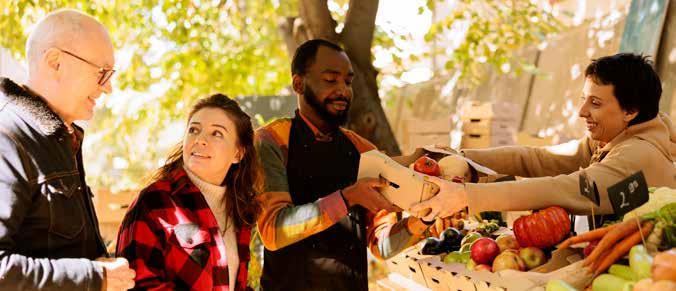
raspberries are in great supply, cherries will soon make an appearance. Asparagus is still available for another week or so. Sweet peas, garlic scapes, mushrooms, green onions and lettuce are abundant. There may even be a few new potatoes.
If you are looking for a quick meal, several markets have ready-to-eat empanadas, pero-
gies, samosas, sausage on a bun, ice cream, doughnuts and pizza to name a few options. It is a great time to get outdoors, meet up with friends and shop local. Remember that for every $10 spent at a farmers market, $8 stays within our community.
Michelle Seaborn is the Grimsby Farmers Market manager
By Niagara Farms Staff
An Ontario agricultural organization will have more money to promote the province’s farm and food system over the next three years.
The Ministry of Agriculture, Food and Agribusiness is providing Farm & Food Care Ontario with up to $597,000 to support its outreach projects. The money will be used to enhance several FFCO programs.
“This show of support by the province is extremely encouraging for the direction of FFCO’s work. It reiterates the importance of engaging farmers and the public in meaningful conversations,” said FFCO Chair Janelle Cardiff, in a press release. “This funding will allow us to continue offering unique opportunities to advocate for agriculture across Ontario and expand our initiatives even further.”
Funding will support six of the organization’s priority activities, which all focus on growing public trust and consumer confidence.
These include:
• Outreach events such as the Breakfast on the Farm events that give members of the public a chance to connect with farmers and get a glimpse into life as a farmer.
• Food industry outreach, which includes tours of farm and food processing operations for culinary students, chefs and other food industry professionals. There are also webinars and other relationship building activities to connect those in agriculture with those in the food industry.
• More than a Migrant Worker. This award-winning project done with the help of the Ontario Fruit and Vegetable Growers Association, showcases the important work done by Ontario’s seasonal agricultural workers.
• Enhancing the library of agricultural resources FFCO offers, including the rentable FarmFood360 virtual reality kiosk that can be found at fairs and other agricultural events.


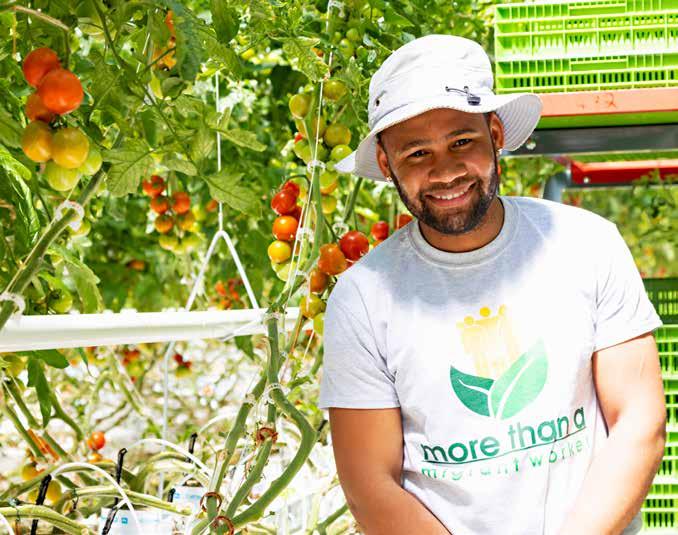
A recent funding announcement by the province will provide Farm and Food Care Ontario with nearly $600,000 over the next three years to continue outreach projects such as the More Than a Migrant
• Updating the farm photo and digital asset library that’s available to industry and media, as well as the digital resources that can be used to promote Local Food Week and Ontario Agriculture Week.
• Training for farmers and agri-business professionals on how better to communicate with non-farming residents.
“Our government is investing in Farm & Food Care Ontario so they can continue to raise public awareness and build trust in Ontario’s farmers and food businesses,” said Trevor Jones,
minister of agriculture, food and agribusiness. “When people know where their food comes from, they can easily choose the freshest, most delicious food to feed their families. This has the added benefits of supporting Ontario’s farmers, communities and our economy and helping to protect the Ontario agriculture and food industry and local food supply chain.”

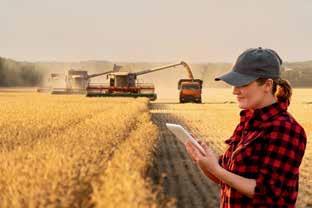



FFCO is a registered Canadian charity that is primarily funded by farmers, farm organizations, agribusinesses and others through memberships and program partnerships.
By Luke Edwards
One of the main purposes of traveling is to experience something new. And that was exactly what the five visitors who spent time in Niagara last month through the Junior Farmers exchange program experienced.
The group kicked off their tour of Ontario with a stay in Niagara, visiting both agricultural operations as well as the regular tourist sites associated with the region. It included young people from Northern Ireland, Scotland, Austria, Switzerland and Germany. A sixth from the Republic of Ireland was set to join them later on.
“It’s been very interesting. Especially this area,” said Jack Stewart, from Northern Ireland.
“The variety of different farming practices is quite different from what any of us would have experienced.”
The visitors had a range of backgrounds, including equine, dairy, beef, and sheep, and vegetables like potatoes.
For the most part, none of the visitors had experienced much in the way of fruit farming and vineyards that can be found in Niagara.
“We don’t have the climate for that, so it’s very different. We’re usually growing crops like silage, barley, grass, wheat, things like that,” said Scotland’s Fiona Currie, adding the only fruit producers tend to be greenhouse operators.
Germany’s Isabelle Pröstler said their experience was similar.
“We only have fruit farms with apples and pears. We have some fruit farms with peaches, but they are in the greenhouse,” she said.
“Germany’s not so hot in the summer, the winter’s not so cold.”
When they arrived in Canada we were just getting the earliest of field crops, including asparagus. Pröstler said Germany also produces asparagus, but back home they have both green and white varieties.
“I think that was very interesting to see.”
They’ve also noticed a strong buy local belief here in Niagara, as well as a level of self sufficiency higher than back home. Learning about


the supply management systems in some Canadian ag sectors has also been interesting, they said.
The group said the hospitality they received in Niagara was wonderful. The language barrier was a bit of a challenge for Pröstler, Austria’s Selina Brettner and Switzerland’s Sophie Kauer. Fortunately, they all speak German so they could communicate easily with each other. And even after only a week or two in Canada they noticed their English improving.
“From day to day it’s easier for us,” Pröstler said.
After their stay in Niagara, the group is spending time at different locations throughout
Ontario. They get a break week in the middle that happens to coincide with the Calgary Stampede, so Currie said they’re hoping to fly to Alberta to experience the event.
She’s actually following, somewhat, in the footsteps of her mom, who also took part in the exchange program 20 years ago. While her mom visited different countries, her experience was likewise rewarding and she met people who have become lifelong friends.
The experience has been just as rewarding for the hosts, who have got to learn a bit what farm life is like in other parts of the world. And while president Jordyn Domio and past president Matt Smith said there are differences,
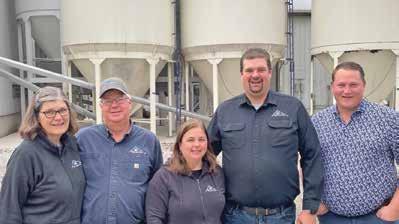

issues,” added Smith.
The Wentworth-Niagara Junior Farmers got back up and running in late 2023 after folding in 2019. For more information, follow the group on Instagram, @wentworthniagarajf.


Brock researcher will seek input from farm families in new
By Luke Edwards
With rates of child injuries and deaths on farms remaining stubbornly high over the past 30 years, a Brock University researcher is turning to farmers and their families in an effort to come up with solutions.
William Pickett, a professor of health sciences, has devoted countless hours over the years researching incidents of death and injury among young people on farms, with the goal of figuring out how to make farms safer for kids. And yet, rates remain more or less static to when he began.
So now he’s taking a new approach, talking directly to farm families. This spring he received a grant from the Canadian Institute of Health Research for a project that will seek input from farm parents, farm kids, and health and safety professionals who work with farmers.
“It’s become pretty clear that the usual ways of preventing injury, preventing major trauma, they don’t work that well with farm kids,” Pickett said.
“What’s missing in this is actually listening to the farmers from the farm perspective and the farm family perspective about how you prevent these things.”
Pickett’s work, a joint effort with the University of Saskatchewan and University of Alberta, will seek input from four different groups: campus students with a farming background, young kids currently growing up on farms, farm parents, and health and safety professionals who work with farmers.
Those interviews will seek to answer a simple question.
“Are there innovative solutions to protect kids, so that they receive the good of growing




up on a farm but are protected from the major hazards?” Pickett said.
The common approaches to other sectors simply don’t work as well for the farming community, Pickett said. Imposing rules and regulations, or engineering the environment has tended to fall of deaf ears when it comes to farmers.
“That’s not always accepted that well for people who are very independent,” said PIckett, who grew up in the country and worked on farms in his youth.
His dad was a county coroner, and so Pickett was drawn to the issue by coming at it from the medical perspective.
Well meaning groups have tried to host safety camps. Medical people have tried to impose solutions. But none of it has really worked well, Pickett said.
“We want to step back and have a new look at this, talking with the groups that are actually at risk,” he said.
“My experience working with farm communities across the country is that they’re very intelligent and they’re very aware of the risks that their lives have.”
The farming community is unique in several ways, not the least of which is the fact their place of business is also usually their home. And kids start working on the farm at ages younger than in any other setting.
“(Farms) build tough kids, we build resilient kids. And there’s so much good in that, but there’s also risks,” he said.
Somewhere between 450 and 500 farm kids have died on the farm in Canada over the past 30 years, Pickett said. While overall numbers have decreased, that’s mostly the result of fewer people living on farms. Rate stats have remained static.
The goal is to conduct interviews with about 20 people in each of the four groups. Once
The Township of West Lincoln’s annual Community Recognition Awards is back to




Do you know a West Lincoln resident whose contributions or history of service have benefitted the community? Nominate them for a Community Recognition Award! Nominations are open until September 8, 2025.



that’s done, they’ll take what they’ve learned and apply it to past events to see if any of the ideas generated could have prevented a death.
“I am optimistic that maybe a fresh look at this will provide solutions that actually work and they’re actually acceptable to farm populations across the country rather than having something imposed,” Pickett said.
Respecting those farm families is a huge part of it, he added.
“No parent is intentionally putting their kid in harm’s way so you have to have respect for them as parents and for them as human beings,” he said.
The project is still in the early stages but Pickett hopes to get out interviewing people this summer. Anyone interested in his work or participating, can email wpickett@brock.ca.

Lake Land Meats continues under new ownership as founders enjoy retirement
By Luke Edwards
Little did he know at the time, but when Steve Guenther discovered Lake Lake Meats he found more than just a place to buy quality, locally grown meats.
He found a future business opportunity.
Last month Guenther officially took over the business, opening a new location in Vineland after Arden and Bill Vaughn decided to retire after a 30-year run. Guenther has experience in the food industry, having worked at and managed restaurants, but this will be a new venture for him. And while he doesn’t have a specific farming background like his predecessors, he said he appreciates farmers who go the extra mile to ensure their animals are taken care of and their meat is top quality.
“It really aligned with my philosophy in terms of food in general, meat in particular and the ethical treatment of animals,” he said.
So when he learned that the Vaughns were looking to retire he reached out. Eventually they came to an agreement that Guenther would take over operation of the business. He spent several months working with the Vaughns as he learned the business and developed relationships with the suppliers and regular customers.
He found the Vineland storefront, on King Street next to Just Cooking. The move brought the store closer to his home, but Guenther admitted he was a little worried about whether the regular customers would follow him.
Fortunately, he said that seems to have been the case so far. He’s also received support from the local Vineland community.
“There’s really a sense of community around this place,” he said.
Guenther doesn’t plan on changing much, offering the same products from the same suppliers. The focus is all as local as possible, with most of the products being no further than a
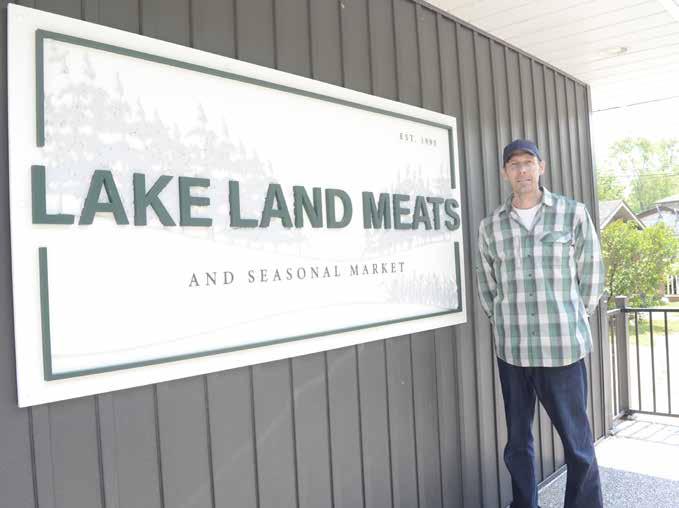
couple hours away. The closest are the duck and quail eggs that he gets from Spring Creek farm just up the road in St. Anns. But even the fish he gets from an operation near Georgian Bay is out of the pond and packed within three hours.
“You can’t get fresher than that,” he said.
With more square footage at the new location, Guenther said he’s looking at adding in some more non-meat products, such as local seasonal produce, breads and even grassfed doggy treats.
And given his kitchen background, Guenther’s considering offering some soups and pre-made meals in the future.
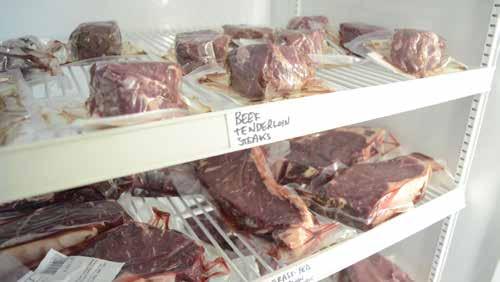
“Expanding out but staying local,” he said. Since he started shopping at Lake Land, and especially as the transition to ownership began, Guenther said he’s gained a real appreciation for the farmers who are doing it right. The stories of mistreatment and the shock videos posted to YouTube can paint farmers in a negative light. But now he gets to see the other side of it, and the farmers who take care of their animals.
“These people, they work so hard,” he said. The store is located at 3451 King St. They’re open from Tuesday to Friday, 11 a.m. to 5 p.m., and Saturday from 11 a.m. to 4 p.m. They’re also on Facebook and Instagram.
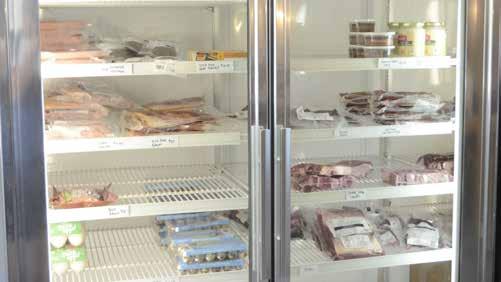

By Luke Edwards
After watching others get their chance atop one of the horses at BNR Stables, it was finally Rebecca Garside’s turn. The smile and wave as she made a loop around the barn made it clear it was worth the wait.
“She’s been on a pony, but this is the first time on a horse,” said mom Jen, who brought Rebecca down from Stoney Creek to visit the Fenwick barn during Wild West Day last month.
It’s an annual fundraiser for the Horse Sense For Kids program that farm owners Brenda and Rob Langendoen operate to provide horse programs to young people in the region who may not otherwise have access.
With sunny skies and mild temperatures, this year was one of the best attended in recent memory, said Brenda. Hundreds turned out to ride or brush a horse, visit with the other farm animals, take part in some ag-related fun and games or simply enjoy an ice cream and relax on the farm.
“For a lot of them, this is their first time around a horse,” said Langendoen, adding she was grateful for everyone who came out along with the volunteers and sponsors who make Wild West Day a success.
In between making sure everything was running smoothly, Brenda and Rob spent the day chatting with visitors.
“We had some of our old students coming back, now with their children,” said Langendoen.
Seeing the day succeed is a great reminder that the hard work they put into the HSFK program is worth it.
“It helps reaffirm what we’re doing,” she said.
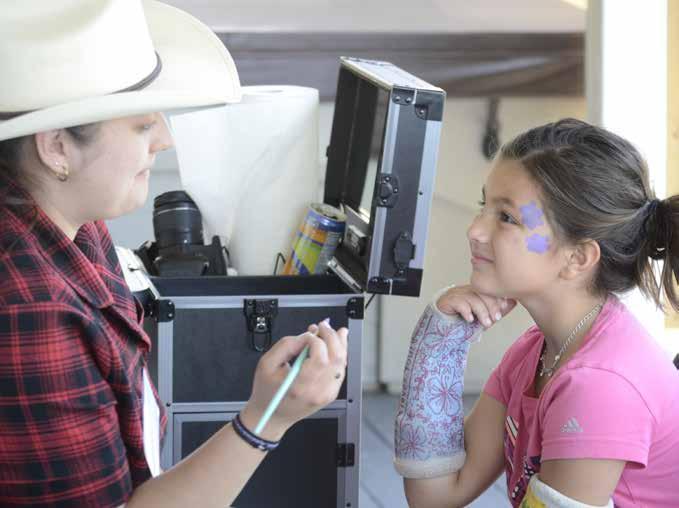
HSFK runs through two streams. The first sees partners like Pathstone and Big Brothers Big Sisters connect kids they think would benefit from the horse program with HSFK. The second is a subsidy program families can apply to when they can’t afford to pay for the program.
Even in a few short weeks, Langendoen said there are often marked improvements in the children’s self esteem, confidence and social skills.

She thanked the sponsors for the event, including Bricon Construction Management, Glen Sisak Pharmacy, Liuna 837, Darcy Richardson Real Estate, and Mareas Therapeutic Services for Children and Families
At Wild West Day, they also unveiled the Winner’s Circle, a monthly donor program supporters can sign up for. For more information, visit hsfk.ca.
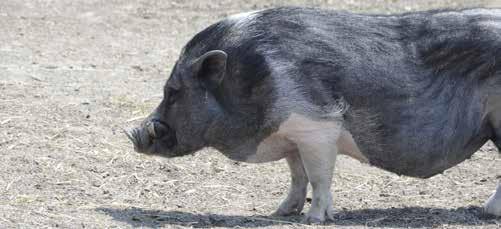
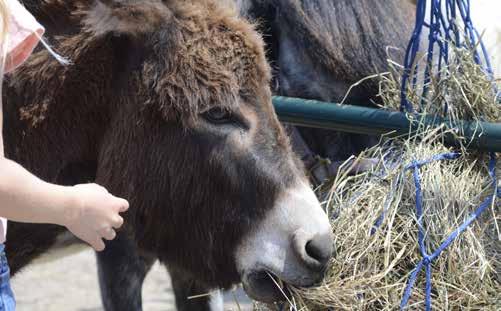

By Luke Edwards
For many high school students, a highlight is when they get to take their parents’ car to school, or better yet, when they buy their own and get to drive it to school.
In Smithville, there’s a different highlight for a select group of the 250 or so students that go to Smithville Christian High School.
Towards the end of each school year, several ride to school in style, taking mom or dad’s tractor, combine or other farm implement as part of a long running tradition on country and western day.
“We’ve always had a spirit day called country and western day,” said Linda Booy-Korvemaker, director of student services at the school.
“What happened is students started bringing in tractors.”
While not technically part of the annual spirit day, it’s become a yearly tradition, as many of the farm kids who go to the school bring whatever tractor is available to them. Historically the school has
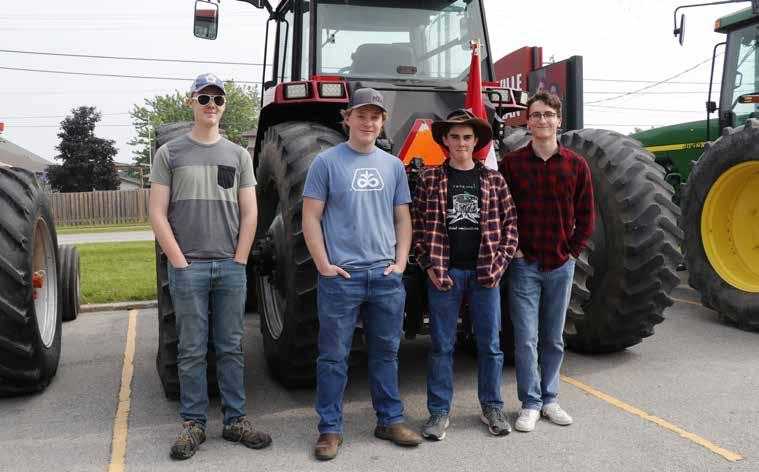
had them park in behind but this year administration asked them to park out front for safety reasons.

It turned out to be an attention grabber, Booy-Korvemaker said, as many parents walking by stopped to take a photo with their young ones.


The Kubota RTV-X is the #1 Selling Diesel Pure Utility Vehicle in Canada since 2003*. And now, it’s better than ever. With its tougher, more aggressive styling and loaded with bold new features, it's built to work as hard as you do. New LED headlights, heavy duty multi-purpose tires and, on select trims, 3-way open ProKonvert cargo box are built with tough & dependable components like its Kubota diesel engine, VHT-X transmission, and hydraulic dump. kubota.ca |

Country and western day is an annual staple in the school’s spirit day calendar, which often includes other days like twin day, jersey day and pink shirt day. But for some reason, country and western day has become a must each year.
“There seems to be a love for everything country and western here even though we have a lot of city kids,” Booy-Korvemaker said.
The school draws students from across the region, including Dunnville, St. Catharines, Grimsby
and Niagara-on-the-Lake. Farm kids actually make up a small percentage of the population. However, given Smithville’s history, Booy-Korvemaker said it’s a great way for those farm kids to celebrate their community and for the student body to recognize Smithville.
“The fact that we’re in Smithville, which has traditionally been an agricultural community, It kind of celebrates where we are,” she said.
The actual sanctioned portions of the day included activities like a dunk tank, inflatable slide, inflatable bubble pool, and pie eating
Continued to page A19

Continued from page A18
contest. There was also a tractor pulling contest where groups compete to see how far and fast they can tug a tractor. And of course, the students dress up in plaid, cowboy boots and cowboy hats.
In addition to their spirit days, the school also hosts dress-down days, where students can pay $5 to not have to wear their uniform. This year they raised $6,000 for charity through those days.

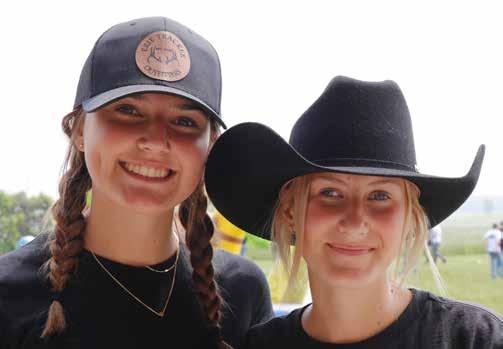
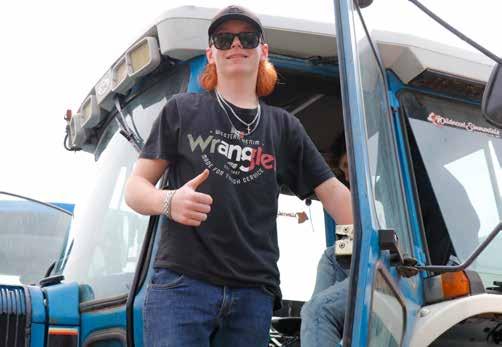


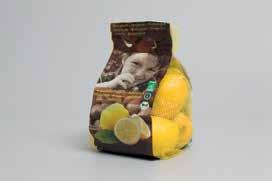

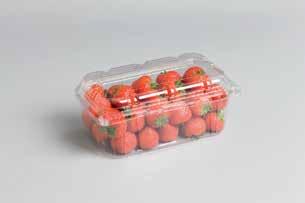

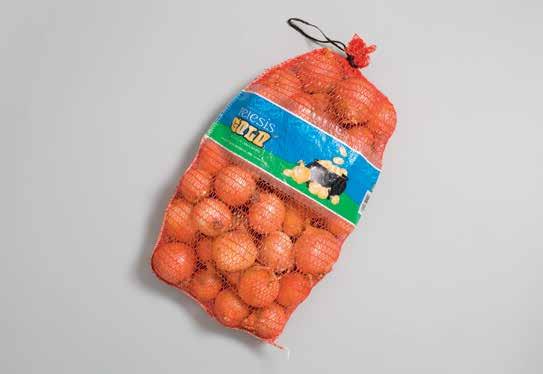
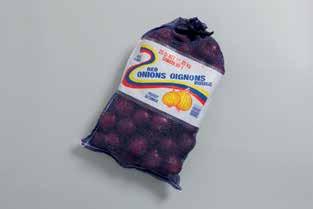
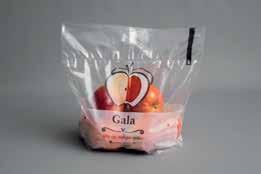
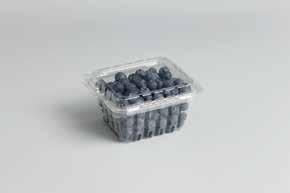
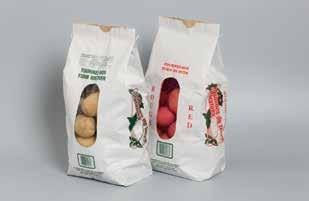

This month started with a celebration of all things Canada, taking on a little extra meaning this year thanks to the state of global politics.
Many might have used the holiday to turn on the barbecue and get grilling. And with summer in full swing, every sunny evening will provide another opportunity to do some outdoor cooking.
From classics like burgers and hotdogs, to more labour intensive projects like a brisket, there are all kinds of ways to use the barbecue. Grilled veggies can be also be a great addition to many dishes and help round out a meal.
Here are some grilling recipes to get you thinking about the barbecue season ahead, courtesy our friends at Foodland Ontario.

Grilled Steaks with Corn and Nectarine Salsa
Ingredients
Salsa:
• 2 tbsp (25 mL) extra-virgin olive oil
• 1 tbsp (15 mL) red wine vinegar
• 1/4 tsp (1 mL) each salt and pepper
• 1 clove Ontario garlic, pressed
• 1-1/2 cups (375 mL) diced Ontario nectarines or peaches
• 1-1/2 cups (375 mL) grilled Ontario corn kernels
• 1/2 cup (125 mL) diced Ontario sweet red pepper
• 1/3 cup (75 mL) diced Ontario red onion
• 1/3 cup (75 mL) chopped fresh Ontario parsley
• 1 to 2 tbsp (15 to 25 mL) finely diced Ontario jalapeño pepper
Steaks:
• 2 tsp (10 mL) vegetable oil
• 2 cloves Ontario garlic, pressed
• 1 tbsp (15 mL) dried parsley flakes
• 2 tsp (10 mL) each brown sugar, chili powder and dried oregano leaves
• 1/2 tsp (2 mL) each coarse salt and pepper
• 2 Ontario strip loin grilling steaks (each about 8 oz//250 g), about 1-inch (2.5 cm) thick
Instructions
Salsa: In medium bowl, whisk together oil, vinegar, salt, pepper and garlic. Add nectarines, corn, red pepper, onion, parsley and jalapeño to taste; toss to coat. Set aside.
Steaks: In small bowl, stir together oil, garlic, parsley, brown sugar, chili powder, oregano, salt and pepper. Rub mixture on both sides of the steak. Place on greased grill over medium-high heat. Grill, covered, turning once, until medium-rare, about 8 minutes or until desired doneness. Transfer to cutting board; let stand 5 minutes. Thinly slice against the grain. Serve with salsa.

Grilled Eggplant Subs
Ingredients
• 4 oz (125 g) creamy Ontario goat cheese (chèvre), at room temperature
• 1 tsp (5 mL) finely chopped fresh Ontario rosemary
• 1/2 tsp (2 mL) pepper
• 1 small Ontario eggplant, cut crosswise in 1/2-inch (1 cm) thick slices
• 1 tbsp (15 mL) olive oil
• 2 10-inch (25 cm) long sandwich buns
• 1 large Ontario tomato, thinly sliced
• 1/2 cup (125 mL) fresh Ontario arugula leaves Instructions
In small bowl, blend together goat cheese, rosemary and pepper. Lightly brush both sides of eggplant with oil. Place on greased grill over medium-high heat; close lid and grill, for 2 to 4 minutes per side or until lightly softened. Meanwhile, split buns in half lengthwise. Lightly brush cut sides with oil and grill just until toasted. Divide eggplant slices between bottom halves of buns; top each with goat cheese mixture. Add tomato slices and arugula. Top with upper bun halves; cut in half.

Ingredients
• 2 Ontario tomatoes, diced
• 1 cup (250 mL) diced Ontario cucumber
• 2 cloves garlic, minced
• 1/4 cup (50 mL) chopped fresh Ontario basil
• 2 tbsp (25 mL) each drained capers and chopped black olives
• 1 tbsp (15 mL) fresh lime juice
• 4 fresh Ontario trout fillets (12 oz/375 g each), cleaned and de-boned
• Olive oil, optional
• Salt and pepper
Instructions
In large bowl, toss together tomatoes, cucumber, garlic, basil, capers, olives and lime juice; set aside.
Brush fillets lightly with oil. Season fillets with salt and pepper to taste. Place on a hot grill, reduce heat to medium; close lid and cook, turning halfway through, about 5 to 6 minutes a side. The fish is ready when it flakes easily with a fork. Serve with tomato mixture spooned over top.
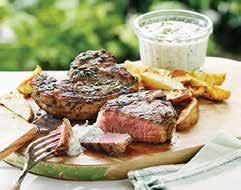
Ingredients
• 8 Ontario loin lamb chops
• Cucumber Mint Sauce:
• 2/3 cup (150 mL) plain yogurt
• 1 cup (250 mL) shredded Ontario greenhouse cucumber, squeezed dry and chopped
• 1 small clove Ontario garlic, minced
• 2 tsp (10 mL) concentrated mint sauce
• Salt and pepper
Instructions
Cucumber mint sauce: In medium bowl, combine yogurt, cucumber, garlic and 2 tsp (10 mL) concentrated mint sauce. Season to taste with salt and pepper. Cover and chill at least 1 hour to blend flavours.
Spread thin coating of more concentrated mint sauce on both sides of lamb chops; let stand 15 minutes. Grill or broil lamb to desired doneness. Serve with Cucumber Mint Sauce.

East Coast Rappie Pie Burger
Ingredients
• 6 strips thick cut Ontario bacon
• 1 cup (250 mL) grated Ontario red potato
• 1/2 cup (125 mL) chopped Ontario onion
• 1/4 tsp (1 mL) each salt and pepper
• 1 lb (500 g) extra-lean Ontario ground chicken
• 1 Ontario egg
• 3/4 cup (175 mL) low fat Ontario sour cream
• 6 burger buns, toasted
• 1/3 cup (75 mL) chopped, fresh Ontario chives
Instructions
In large nonstick skillet, over medium-high heat, cook bacon until crisp. Drain on paper towel-lined plate. Dice 4 strips and crumble remaining 2 strips; set aside. In remaining fat, cook potato, onion, salt and pepper until potato is tender, about 5 minutes, stirring continuously. Set aside. In medium bowl, mix together chicken, diced bacon, potato mixture and egg until well combined. Divide mixture into 6 equal-sized balls and shape into 1/2-inch (1 cm) thick burgers. Place burgers on greased grill over medium-high heat. Grill, covered, 5 minutes on each side, until thermometer inserted sideways into centre of each burger reads 165°F (74°C).
Continued to page A21
In small bowl, combine sour cream and crumbled bacon. Assemble burger on bun, top with 2 tbsp (25 mL) of the bacon sour cream and sprinkle with chives.

Grilled Peaches and Berries on Honey Yogurt
Ingredients
Honey Yogurt:
• 1-1/2 cups (375 mL) 3 to 5% plain unsweetened Ontario yogurt (not Greek) without gelatin
• 2 tbsp (25 mL) Ontario honey
• 1/2 tsp (2 mL) vanilla
• Pinch each of ground cinnamon and nutmeg
• Chocolate Crunch:
• 1 oz (30 g) bittersweet or milk chocolate, chopped
• 3 tbsp (45 mL) large flake rolled oats
• 2 tbsp (25 mL) each pistachios and pumpkin seeds, coarsely chopped
• Scant pinch each salt and cayenne pepper
Fruit:
• 3 unpeeled Ontario peaches or nectarines or 3 to 4 Plums, or a combination, halved and pitted
• 1-1/2 tsp (7 mL) vegetable oil
• 1/2 cup (125 mL) Ontario blueberries or halved Ontario strawberries or a combination of both
Garnish:
• Fresh Ontario mint leaves
Instructions
Honey Yogurt: Line fine-meshed sieve with single layer of paper towel; set over medium bowl. Turn yogurt into sieve. Cover and refrigerate 4 hours or overnight. Discard liquid. Turn yogurt into bowl; stir in honey, vanilla, cinnamon and nutmeg. Refrigerate until serving.
Chocolate Crunch: In small glass bowl, melt chocolate in microwave on High in 10-second intervals. Stir in oats, pistachios, pumpkin seeds, salt and cayenne until mixed. Scrape onto small parchment paper-lined plate. Spread into single layer; refrigerate until hardened. Coarsely crumble.
Fruit: Preheat barbecue to medium heat; oil grill. Brush fruit halves lightly with oil. Place on grill for 3 to 5 minutes, turning once, until fruit is grill-marked and tender. Cut fruit into thick wedges.
On each dessert plate, place one-quarter of the yogurt onto centre of plate. With the back of spoon, fan out yogurt into
half-moon shape. Equally spoon grilled fruit wedges over top; sprinkle with berries and chocolate crunch. Garnish with mint..

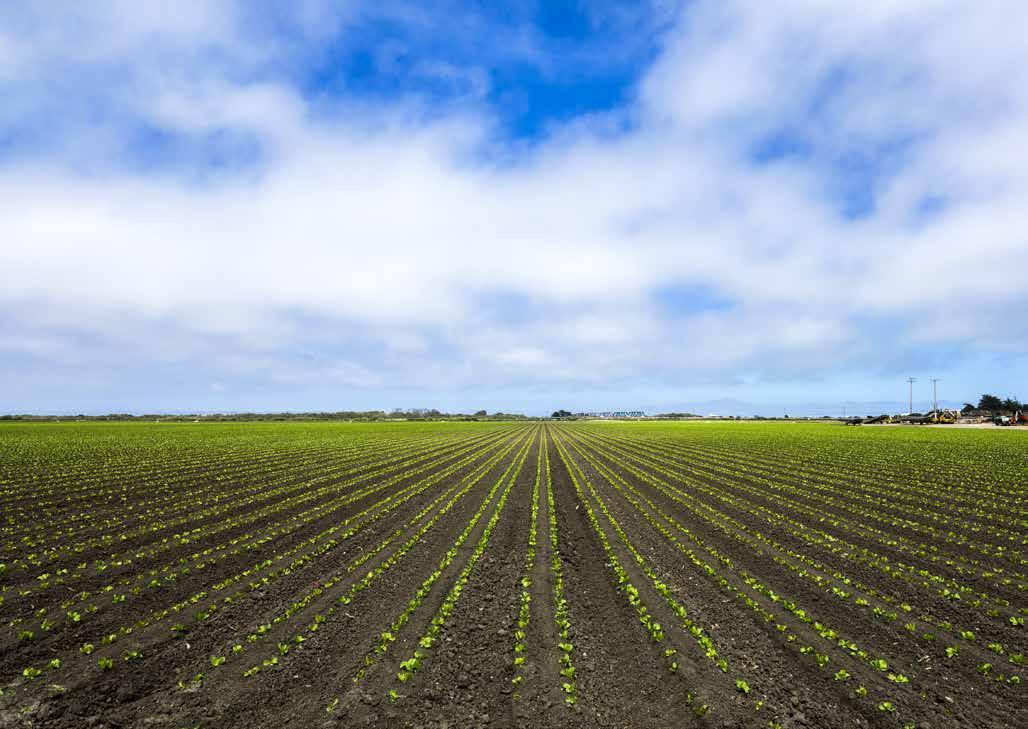




By Luke Edwards
There are millions of dollars worth of food being left in fields and silos, granaries and processing facilities across the country.
And a small but growing group of researchers and business people are developing ways to turn that wasted product into viable business opportunities while also supporting food security. Nearly 100 of them met last month at a Canadian Upcycling Networking meeting hosted by Vineland Research and Innovation Centre.
Upcycling has a niche role in several industries and refers to using items that many would assume is waste and creating something of value from them. In the world of food, that means taking ingredients that otherwise wouldn’t be used for human consumption, and using it to create something new. Examples include turning spent grains into fermentable sugars and plant-based proteins, creating a prebiotic, gut-health powder from resistant starch found in potatoes, or anything in between.
“We want to be part of a system that wastes less,” said Lara Ramdin, a board member for the Upcycled Food Association, a global organization with members from 14 different countries.
She cited a statistic that suggests $58 million of food is wasted in Canada each year. Finding ways to reduce that waste and use those products for something good not only is a potential revenue source for clever entrepreneurs, but can help increase food security nationally and abroad.
Ramdin said if no food in this country was wasted, there’d be enough to provide food insecure Canadians with three meals a day for 300 days.
“We can do more with less,” said Ramdin, adding the world is “poised for a significant acceleration in the upcycled movement.”
However, significant challenges remain. Chief among them is consumer perception and behaviour. Despite consumers becoming more
aware of food costs, Ramdin said the evidence suggests it isn’t leading to less waste. Instead, consumers are opting for cheaper brands while still wasting just as much as they always have.
That creates an added challenge for those selling upcycled foods, because shoppers are increasingly wary.
“They’re not going to take a chance on a product that’s utilizing something they’re not sure of,” she said.
For years the food industry convinced shoppers “that food grows in a straight line,” Ramdin said. Strawberries were all the exact same shape and colour, every loaf of bread came out of the oven looking identical to the one before it. That created an unrealistic understanding of food.
Now, those interested in reducing waste - like people in the upcycled sector - need to “convert the public’s mindset,” said Doug Alexander, vice president of sustainability and government relations with the Belmont Food Group. He was one of four people to participate in a panel discussion at the meeting.
“When I see the kind of food waste I do… it bothers me. I want to do the right thing,” he said.
A key group that needs to be a part of that public perception conversion, said many in attendance, are the retailers. Until shelves are stocked with upcycled food items, it’ll be an uphill battle.
But it also requires work and collaboration among those in the sector. For instance, Ramdin said the messaging is vital. She referenced one company that began talking about “rescuing nutrition” in its marketing. That reframing helped convince consumers to give it a try.
Another example is a Canadian company Solnul, which has a line of gut health products created using resistant starch from potatoes. The company came armed with clinical studies
Stay up-to-date with the latest news and local stories. View the current edition online 24/7 at www.granthaven.com/niagara-farms
Don’t miss a beat and sign up free to receive each edition straight to your inbox.
For those of you who prefer to have a printed copy of the paper we will continue to drop off paper at many local businesses and community spaces.

Alexandra Grygorczyk is a research scientist at Vineland Research and Innovation Centre. She was a speaker and discussion panel moderator at last month’s upcycled food meeting. ~ Vineland Research and Innovation Centre photo
and led their marketing with the potential benefits from their products.
“The upcycling story came afterwards,” Ramdin said.
Public perception and consumer behaviour aren’t the only hurdles to overcome, however. Canada’s size can make supply chain issues a challenge, and small start-ups struggle with funding, access to research, confusion over regulatory requirements, and larger companies who can dominate the space.
Some solutions to those issues can be found in collaboration, several in attendance said, and which was one of the main goals of the meeting.
“I was excited to hear how much interest there was in collaboration,” said Alexandra Grygorczyk, a research scientist at VRIC who was a speaker and discussion panel moderator at the event.
Throughout the day she heard several conversations among the attendees that unlocked potential solutions to issues they were facing. A sure sign of success was the fact there was no rush when they broke for lunch, because many people were deep in conversation.
“Seeing them connect was very gratifying,” she said.
Grygorczyk and the team of organizers will now generate a report based on what was discussed and figure out next steps as they work to develop an upcycled food network in Canada.
That’s something Ramdin said she’d like to see. She said there was a limited response from Canada when the UFA hosted a scientific symposium earlier this year. Fortunately, it was so popular elsewhere they’re planning a second online symposium in the fall, on Sept. 17.
The UFA was created in 2019 by a group of upcycled food businesses. A non-profit organization, it now has members in 14 countries across the globe and has created an upcycled certification program. Now in its third evolution, the third-party process is meant to instill consumer confidence in upcycled products.
VRIC received funding from the CIFST Food Cluster and the Ontario Agri-Food Innovation Alliance (a collaboration between the Government of Ontario and the University of Guelph) to support knowledge translation and transfer within the food upcycling industry.







By Jeff Tribe
Wine and cheese were merely the appetizers.
The main menu items at the Jamaican Liaison Service’s (JLS) Agricultural and Tourism Forum were staple specialties of the Caribbean island nation: sun, sand and surf, and access to a skilled and committed labour force through the Seasonal Agricultural Workers and Ag-Stream Programs.
“We thought we’d take the liaison service to meet the employers,” explained Chief Liaison Officer Althea Riley Friday, May 23 inside Leamington’s Roma Centre. “Meet them where they are - and where they work.
“This is the year of growth, when the Liaison Service puts itself out there to let employers know that we are open for business and we have good quality of workers available in the pool in Jamaica.”
Permanent Secretary on special assignment to the Overseas Employment Programme, Colette Roberts Risden’s goals include expanding employment opportunities for her country’s citizens.
She headed a ‘Team Jamaica’ delegation featuring Riley, Kurtis Davis from the Jamaican Consulate General in Toronto, Younna Bailey-Magalhaes, Deputy Consul General of Jamaica in Toronto, JLS officers including Leighton Davis, Allia McLeary, Sheldon Wright, JN Money Regional Manager Claude Thompson whose financial and other services company works collaboratively with the JLS, and Oral Chambers, Business Development Manager with the Jamaica Tourist Board.
The Agricultural Forum featured wine, cheese, an array of appetizers and goodie bags for all attendees, served up in conjunction with a brief podium pre-
sentation. It included an invitation from Chambers to be among the 4.5-million visitors who enjoy the island nation’s attributes annually, particularly given their existing introduction to Jamaican culture through employees.
The JLS can help bring Jamaican workers to Canada said Chambers, but to fully experience the nation’s culture, food and beaches, they have to visit in person.
“Jamaicans in Jamaica is a different kind of vibe.”
Although the location was chosen to coincide with labour opportunities created by growth in the area’s greenhouse industry, JLS messaging is consistent throughout every Canadian region Jamaican temporary foreign workers are employed in.
Roberts Risden’s goals included both recognizing the importance of farm employers to the programs, and by extension, Jamaica, along with committing to existing relationships and building new ones.
The podium presentation emphasized Jamaican program participants are pre-screened for mental and physical fitness, undergo criminal checks and have farm experience. Against a backdrop that ‘the nation is open for business’, Jamaican workers Roberts Risden suggested when choosing Jamaican workers, employers are ‘choosing success.’
Their stated view of worker programs is far different from the negativity which may be presented on social media and through some media outlets.
“They’re outside looking in,” said Riley.
Admittedly, there is room for improvement, but Roberts Risden believes that can be best accomplished working together through ongoing collaborative effort.

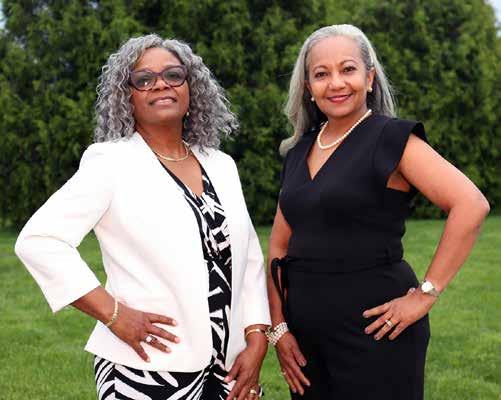
“We can solve any issues,” she said.
“Move mountains we Jamaicans like to say,” added Riley.
Close to 10,000 Jamaicans are employed through foreign worker programs, representing a significant percentage of the remittances which occupy an elevated line item in Jamaica’s economy, second only to tourism.
“This is social mobility for many people,” Roberts Risden said, ‘hard work’ of program participants typically contributing not only to living expenses, but also education allowing for ascension to a higher level of society. Roberts Risden mentioned health care professionals, lawyers, teachers and other professions, specifically citing a single mother working in the area. One of her daughters is a lawyer says the permanent
secretary, the other works for The United Nations.
Roberts Risden, along with Thompson, used the occasion to announce educational scholarships being awarded by both the Jamaican Minister of Labour and JN Money coinciding with the Seasonal Agricultural Worker Program’s 60th anniversary.
External employment has contributed to Jamaica seeing the lowest level of poverty in its history, Roberts Risden added.
“It’s because of programs like these that provide meaningful, decent work for our people,” she said, emphasizing the importance of programs to the country.
“We believe in a win-win,” Roberts Risden concluded. “It’s a win for Jamaica and a win for the employers.”

By Jeff Helsdon
The latest and greatest in agriculture technology will be on display at the AgRobotics demo day on July 22 at the Simcoe Research Station.
Last year’s event was a success, drawing more than 180 people to see agriculture robots completing tasks ranging from cultivating fields and scanning apple trees for fruit count to cutting grass and automated delivery of produce from the field to a processing station. The event runs from 9:30 a.m. to 3 p.m., and lunch is free to those who pre-register at agroboticswg. com.
The group was formed in 2021 and began to look into the possibility of using robots and artificial intelligence (A.I.) to solve many problems growers are facing. At the end of the first year, the group was working with five different robots. That number has now grown to more than 20 different robot models working in the province, some on farms and others in research trials. The group’s membership has expanded to over 180 people from all over the world.
Dan Woods, project coordinator with Western Fair District and one of the organizers, said this year’s
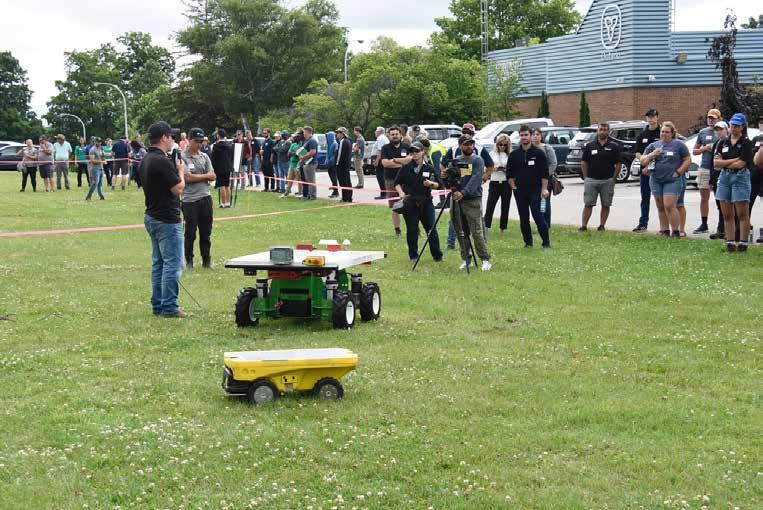
event should appeal to those who are new and returning.
For new attendees, he said AgRobotics Field Day is an opportunity to see multiple technologies





operating in one location, demonstrating what they do.
“It’s one thing to see on a web site, but it’s another to see the technology in person,” he said.
There are several reasons to return to this year’s event if a farmer attended last year.
“Seeing the newest, latest and greatest is a plus,” he said. “Even with technologies that were there last year, they’ve had a year to

The Naio Technologies Oz, which is a French-made electric tractor targeted at market gardeners, was on display last year. It can perform a variety of functions, including hoeing, weeding, seeding, spraying and transporting plants or end product for a base area. Woods said what is different this year is Oz will have had an extended test.
“The plot it will be working on, it will have been working on since the beginning of the season, not just showing up that day,” he said. “It’s cool because people will be able to see what the Oz can do.”
For those wondering why Western Fair District is involved in the working group, Woods explained as a not-for-profit agriculture organization, Western Fair District was brought into the working group as a non-biased third party to work as administrators.
As was the case last year, a similar event will be held in Bradford. Scheduled for July 8 this year, it is tailored to the crops grown in that area.



SATURDAY, JULY 26 6 TO 10 P.M.

THURSDAY, JULY 31 7 P.M.
APPLICATIONS ACCEPTED UNTIL THE END OF JULY

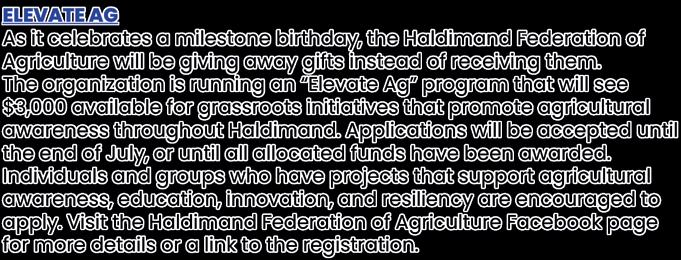
JUNE 28 - JUNE 30

SATURDAY, AUG. 2


By Luke Edwards
The shelves of all 14 Magnotta Winery store locations contain all the common products one might expect, plus one that visitors might be surprised by.
Shoppers, both in person and online, will always be able to find a tick removal kit for sale. After learning the story of the winery’s founders, it quickly becomes apparent why.
“We lost so much time…by the time this had happened it was close to seven years,” said Rossana Di Zio Magnotta, who founded the winery with her late husband Gabe in 1990.
Gabe, an avid outdoorsman, began experiencing health problems in the early 2000s. There were balance issues, eye problems and short term memory loss, among other issues.
“We had him tested for everything,” said Magnotta.
Based on the symptoms, doctors suspected neurological conditions like Parkinson’s, ALS or MS. But test after test came back negative.
Magnotta has a background in microbiology and suspected Lyme disease, a bacteria that can be carried by ticks and infect humans who’ve been bitten. Eventually, the couple travelled outside Canada to receive diagnostic tests for Lyme, which was confirmed.
“When we got to the bottom of it, we were actually quite horrified that the Canadian Lyme disease tests were not performing well,” she said.
Sadly, Gabe died in 2009 from a heart attack that Rossana said was the result of the borrelia



bacteria - the organism that causes Lyme disease - attacking the heart.
The loss of her husband was difficult for Rossana to handle. For a period, she said she felt lost and didn’t know how to deal with life in general.
“And I realized at a point that I needed to do something,” she said.
That something was establishing the G. Magnotta Foundation in 2012, a charity dedicated to improving Lyme disease diagnostics and raising awareness about the disease and the threat ticks pose.
“As a businessperson I know in order to get to Point B I needed to address Point A, which was the fact that we did not have a very good diagnostic test at all,” she said.
The foundation led to the creation of the G. Magnotta Research Lab at the University of Guelph. By next year the foundation will have provided $4.6 million to the lab as it works to develop a better understanding of the bacteria, the disease and figure out a way for doctors to more easily test for Lyme.
“I really felt, and I continue to feel, that Lyme disease is so misunderstood,” Magnotta said.
The test kits include the tools and information needed to properly remove a tick, but Magnotta points out there much more.
“It’s not just a tick removal kit, it’s your connection to the community that’s committed to fighting Lyme disease,” she said.
The winery has sold the kits, but this year released a new version that includes far more,
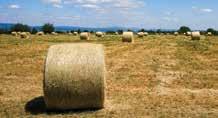



Magnotta Winery sells tick removal kits at all of its Ontario locations and also online. Proceeds go to the G. Magnotta Foundation, which is continuing research into Lyme disease, which is caused by tick bites. ~ Magnotta Winery photo
including repellent, a few different designs of tick removal tools that cover different tick sizes, and information on how and where to send the tick for further testing. There’s also information on the different kinds of ticks, and how to stay involved with the foundation.
All proceeds from the sale of tick removal kits goes to the foundation.
They also sell a series of wines called the Venture series. It started at two and has grown to nearly 25, and 50 cents of each Venture series sale goes to the foundation.


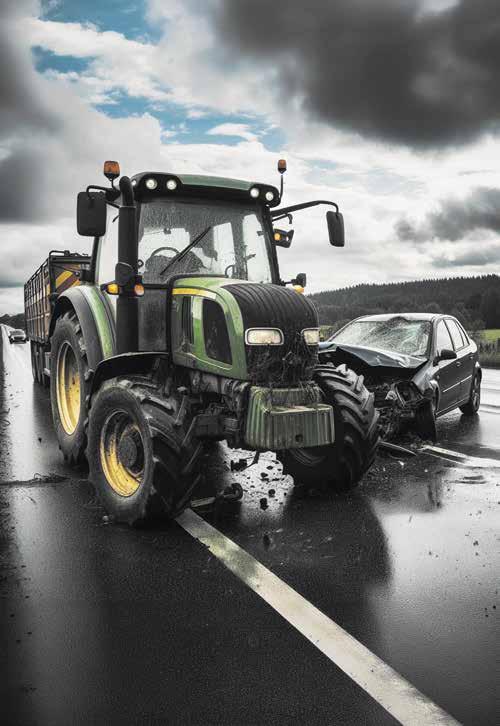
Ultimately, Magnotta said she wants to use the winery as a vehicle to advance Lyme disease understanding.
Since opening the lab, Magnotta said the scientific team there have made advancements. What some might not realize is that there are different strains of the bacteria throughout Canada. Given the country’s size, that probably shouldn’t come as a surprise, but it’s just another aspect that makes detection tricky. Researchers continue to work on understanding those strains.
They’ve also been able to demonstrate the bacteria has a tendency to focus on blood platelets. That knowledge may be helpful in developing diagnostic tools that can test for the presence of borrelia instead of the common test that looks for related antibodies the immune system creates in response to an infection.
Magnotta’s planning a new fundraising event, which she’s calling the Ice Ice Gala, that will take place in Vaughan in November. With a winter wonderland theme, she’s hoping it’s successful and becomes a recurring event. She’s also hopeful the research lab will be able to present more advanced findings at the gala.
With a strong team at the lab, she remains optimistic the results will come.
“We have very talented, smart scientists in our own country and we have a Canadian solution I believe that’s happening right here,” she said.
The tick removal kits can be found at all Magnotta store locations or online at magnotta.com (under the gifts-all gifts tab). For more information on the foundation, visit gmagnottaresearch.com.
Magnotta’s tick tips
Since watching her husband struggle and ultimately lose his life as a result of Lyme disease, Rossana has become incredibly tick aware. She takes every precaution, and encourages the public to do so as well, especially those who spend a lot of time outside, like farmers.
“Farmers are exposed to it, they’re working those fields, they’re working the land,” she said.
Here are some tips Rossana offers:
• Use a repellent. There are various brands and kinds of repellent, so pick the one that works for you. The repellent goes on before the sunscreen.
• Wear light coloured clothing to make it easier to see the ticks. And prevent any access to the skin by doing things like tucking your pant legs under your socks.
• When you return home, throw your clothes in the dryer under high heat for 10 minutes to kill any ticks that may have hitched a ride. It’s also a good idea to go and have a shower.
• Have a friend or family member do a visual inspection. Ticks find good hiding spots on the body, so pay attention to areas like the ear or belly button.
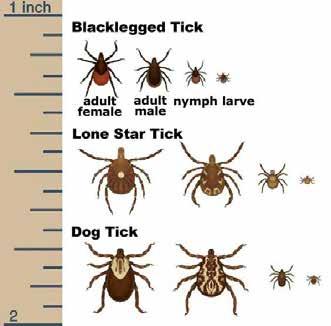
• Stick to the paths, but remember ticks can be found anywhere. Golfers might want to think twice about venturing into tall grass in search of a wayward drive. Migratory birds can also introduce ticks to your backyard or other areas that may not seem risky.
• Be extra careful with pets, who can bring ticks into the home and create an added level of concern.



















